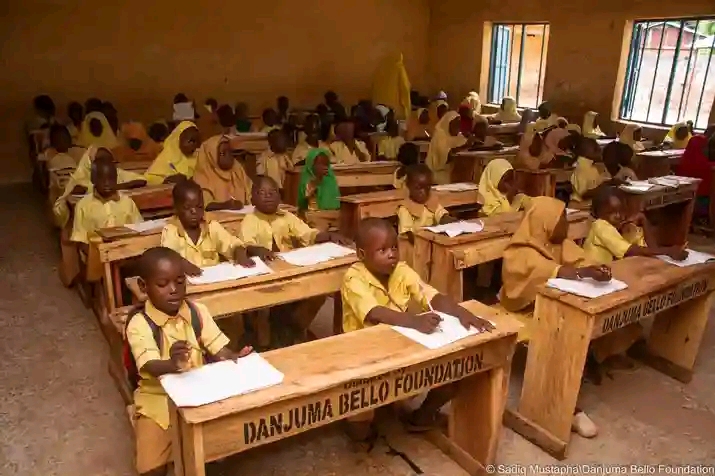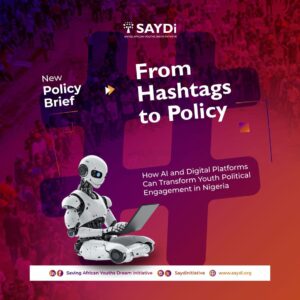The Impact of Socioeconomic Barriers on Access To Quality Education And Potential Solutions.
Access to quality education is a fundamental right, yet millions of individuals worldwide are hindered by socioeconomic barriers that limit their opportunities for learning and growth.
These barriers create a daunting challenge for ensuring equitable access to education. The repercussions of these barriers are far-reaching, affecting not only individual students but also communities and societies at large.
In this article, we discussed the impact of socioeconomic barriers on education access and explored potential solutions to bridge this critical gap, aiming to create a more inclusive and equitable education for all.
Socioeconomic barriers to education refer to obstacles that hinder individuals’ access to quality education due to their economic and social circumstances. These barriers can harm the ability of children to learn, thereby widening the gap between advantaged and disadvantaged groups.

Below are some of the Socioeconomic barriers to education access:
1. Financial Constraints:
Families living below the poverty line or with low-income struggle to allocate sufficient funds for education amidst competing basic needs such as food, shelter, and healthcare. This perpetuates a cycle where children from disadvantaged backgrounds are unable to access quality education, leading to reduced opportunities for social mobility and economic empowerment.
One of the most direct impacts of financial constraints is the inability to afford tuition fees and related educational costs. This includes expenses such as textbooks, school supplies, uniforms, transportation, and examination fees. For families with limited financial resources, these costs can quickly become unmanageable, forcing students to drop out or forgo pursuing higher education.
2. Limited Infrastructures:
Many regions, especially in developing countries, face a significant deficit in educational infrastructure. This includes insufficient classrooms, lack of libraries, laboratories, and basic amenities like clean water and sanitation facilities. The absence of proper infrastructure directly affects the quality of education. Overcrowded classrooms impede teacher-student interaction and personalized learning. The lack of libraries and laboratories limits access to resources and practical learning experiences.
Rural areas often bear the brunt of infrastructure deficiencies, leading to disparities in educational opportunities between urban and rural students. Limited transportation infrastructure further isolates rural communities, making access to schools even more challenging.
Without adequate infrastructure, educational outcomes suffer, perpetuating cycles of poverty and inequality. Students from marginalized communities are disproportionately affected, hindering their chances of academic success and future socio-economic mobility.
3. Inadequate Nutrition:
Inadequate nutrition, characterized by food insecurity, malnutrition, and micronutrient deficiencies, poses a significant barrier to education access. Children experiencing hunger or malnutrition struggle to concentrate, learn, and retain information. Proper nutrition is crucial for cognitive development during childhood and adolescence.
Malnourished children are more likely to experience learning disabilities, delayed cognitive development, and poor academic performance.Inadequate nutrition also leads to health issues such as stunted growth, weakened immune systems, and increased susceptibility to diseases. This further disrupts regular school attendance and engagement in learning activities.
4. Gender Discrimination:
Gender discrimination remains a formidable socioeconomic barrier that impedes equal access to education, perpetuating systemic inequalities globally. This discriminatory practice manifests in various forms, including cultural biases, unequal resource allocation, and limited opportunities, affecting girls and women and hindering their educational advancement.
Deep-rooted cultural beliefs and stereotypes often relegate girls to domestic roles, undervaluing their educational potential. Societies that prioritize male education reinforce these biases, maintaining the cycle of inequality where girls are marginalized and denied equal opportunities to pursue education. This bias not only limits individual potential but also stifles societal progress by depriving communities of diverse perspectives and talents.
Additionally, discriminatory policies and practices, such as gender-based violence in schools or restricted mobility for girls, impede their ability to attend school regularly, hindering their educational progress and limiting their prospects.
5. Language Barriers:
Language is not just a means of communication but also a powerful determinant of access to education. In many parts of the world, language barriers serve as significant socio-economic hurdles, limiting individuals’ opportunities for quality education.
When students cannot understand the language of instruction, it creates a ripple effect that hinders their educational journey in various ways. Firstly, language barriers impede students’ comprehension of lessons, making it challenging for them to fully grasp academic concepts and participate effectively in classroom activities. This lack of understanding often translates into academic struggles, lower grades, and ultimately, reduced academic performance.
Language barriers can have a profound psychological impact on students, leading to feelings of alienation, low self-esteem, and disengagement from the learning process. These psychological effects further exacerbate educational inequalities and hinder students’ ability to succeed academically.

Potential Solutions and Best Practices
Addressing these barriers requires comprehensive efforts from parents, governments, communities, and organizations to ensure equitable access to education for all children, regardless of their socioeconomic backgrounds.
Here are some potential solutions for addressing socioeconomic barriers to education access:
1. EQUITABLE FUNDING:
Equitable funding is a best practice for addressing socioeconomic barriers to education. It involves distributing financial resources in a fair and just manner to ensure that all students, regardless of their background or socioeconomic status, have access to quality education.
Governments should ensure equitable distribution of resources to schools, especially rural communities. This includes funding for essential resources such as qualified teachers, updated learning materials, infrastructures, extracurricular programs, and support systems.
When schools have sufficient funding, they can invest in innovative teaching methods, personalized learning experiences, and support services for students facing socioeconomic challenges. This leads to improved educational quality and better outcomes for all students.
2. FINANCIAL ASSISTANCE:
Financial assistance involves providing support such as scholarships, grants, loans, and subsidies to students from low-income backgrounds or marginalized communities. This assistance helps alleviate financial burdens associated with education, including tuition fees, school supplies, transportation, and accommodation expenses.
By offering financial aid, educational institutions and governments can ensure that all students, regardless of their economic status, have equal opportunities to access and complete quality education. Additionally, financial assistance programs can contribute to breaking the cycle of poverty by empowering individuals to pursue higher education and enhance their career prospects, thereby promoting social mobility and reducing inequalities in society.
3. TEACHERS’ SUPPORT AND TRAINING:
When teachers receive adequate support and training, they are better equipped to understand and cater to the diverse needs of students coming from varying socioeconomic backgrounds. This includes implementing inclusive teaching methods, providing additional academic support, and creating a supportive classroom environment that fosters learning regardless of a student’s economic status.
Furthermore, well-trained teachers can effectively identify and address the specific challenges faced by students from disadvantaged backgrounds, such as limited access to resources, cultural biases, or language barriers. They can adapt their teaching strategies to accommodate different learning styles and provide personalized assistance where needed, ultimately enhancing the overall quality of education and improving student outcomes.
4. COMMUNITY ENGAGEMENT:
Community engagement involves actively involving the local community, including parents, teachers, community leaders, and organizations, in educational initiatives and decision-making processes. This partnership could be promoted to provide additional support services, such as after-school programs, tutoring, mentorship, and parental involvement initiatives.
This approach also fosters a sense of ownership and responsibility within the community towards education, leading to increased support, resources, and opportunities for students facing socioeconomic challenges. Through collaborative efforts, community engagement helps create a more inclusive and supportive environment for students to thrive academically and socially.
5. DIGITAL INCLUSION:
Digital inclusion refers to the equitable access and effective use of information and communication technologies (ICTs) for all individuals, regardless of their socioeconomic status. By providing access to digital devices such as computers, tablets, and the internet, digital inclusion enables students to engage in online learning, access educational resources, participate in virtual classrooms, and develop essential digital skills.
Moreover, digital inclusion promotes innovative teaching methods and learning experiences, allowing educators to leverage technology to create interactive and personalized learning environments. This can enhance student engagement, motivation, and overall academic performance. Additionally, digital inclusion fosters digital literacy and fluency among students, preparing them for the digital-driven workforce and increasing their employability prospects in an increasingly digitized world
Conclusion
Addressing socioeconomic barriers to education is crucial for ensuring equal access to quality education for all individuals. These barriers significantly impact educational outcomes and perpetuate societal inequalities. However, by implementing equitable funding strategies, providing financial assistance, enhancing teacher support and training, engaging communities, and promoting digital inclusion, we can create a more inclusive and accessible education system ensuring that every child has an equal opportunity to fulfill their potential through education.







